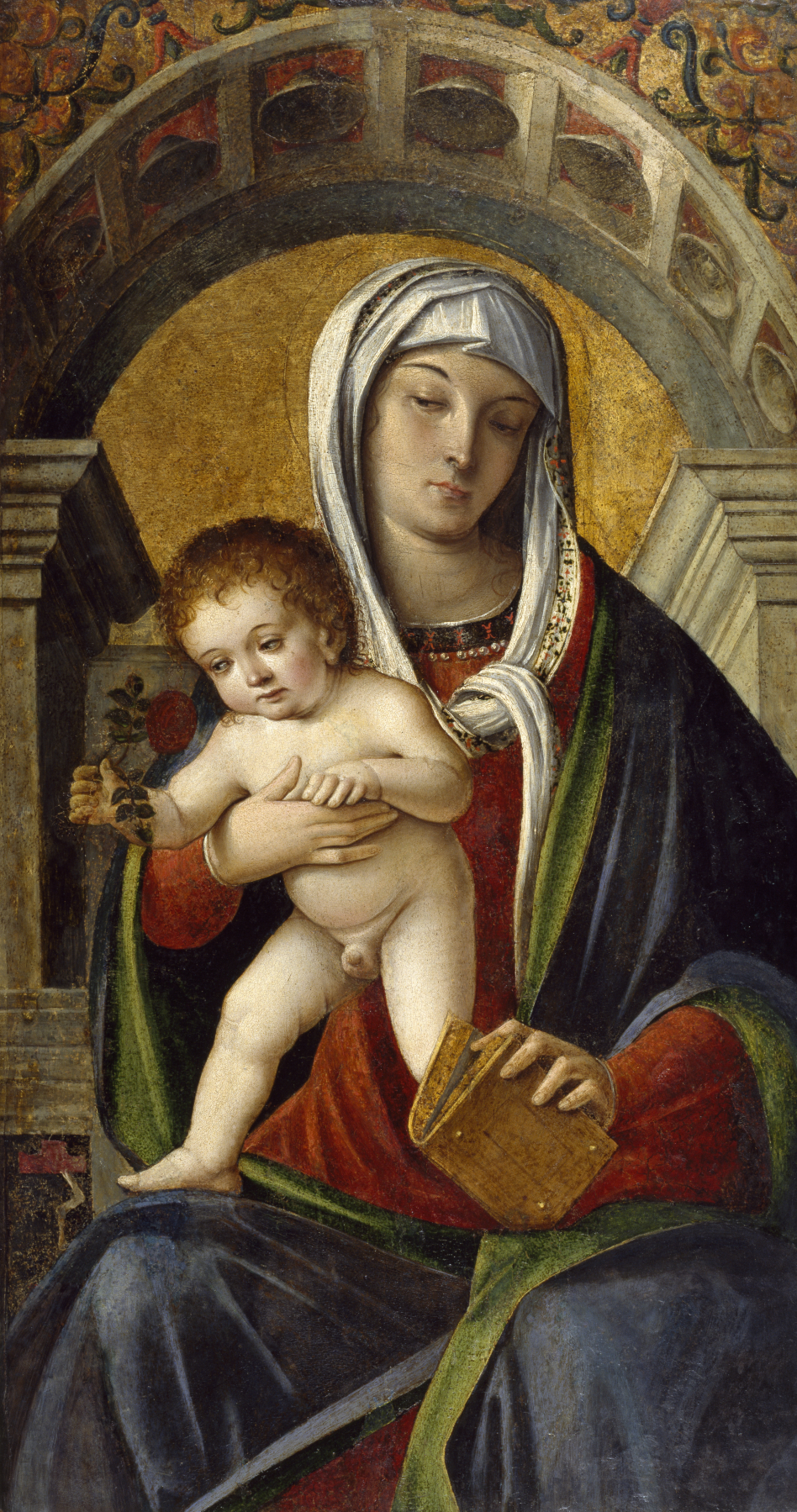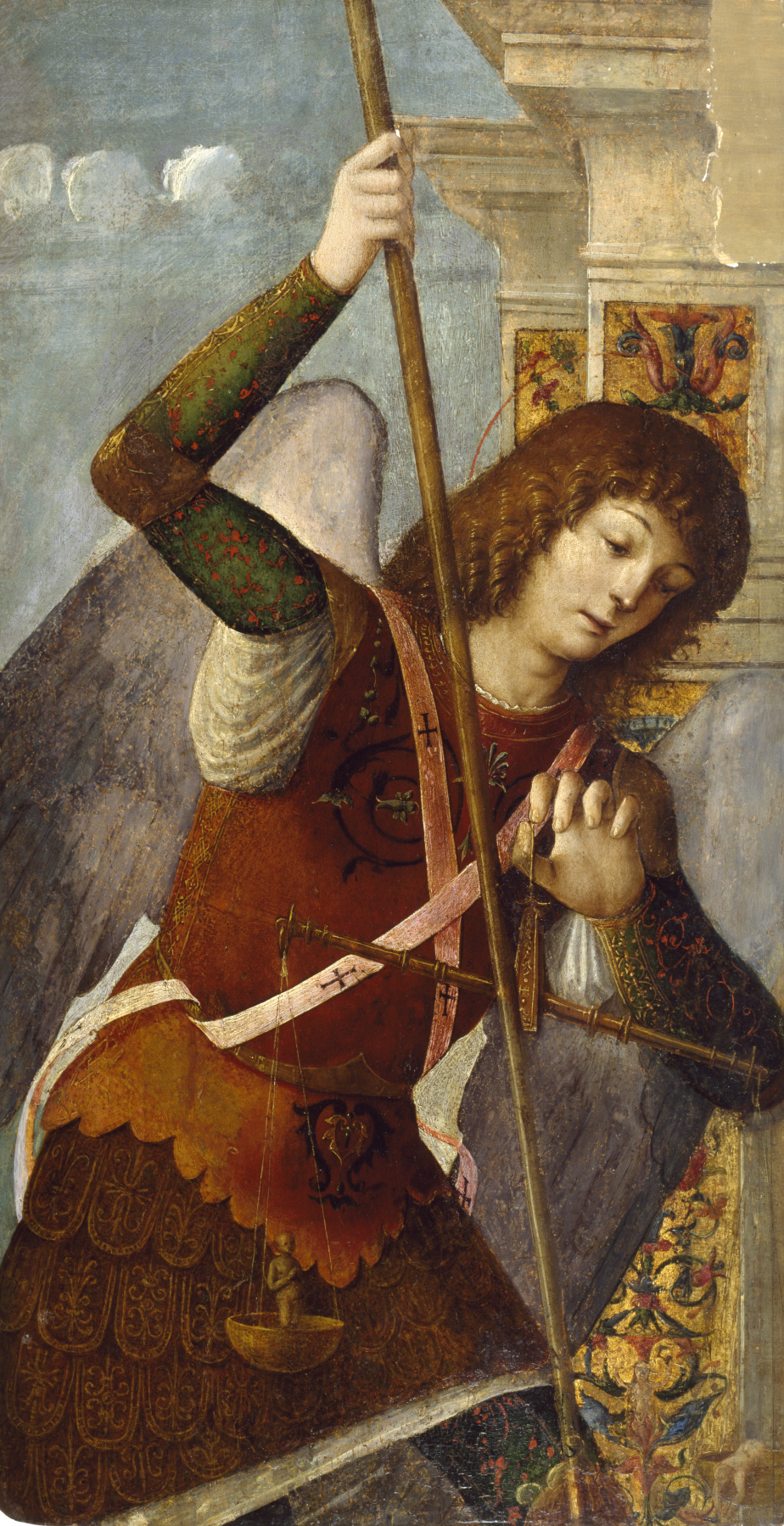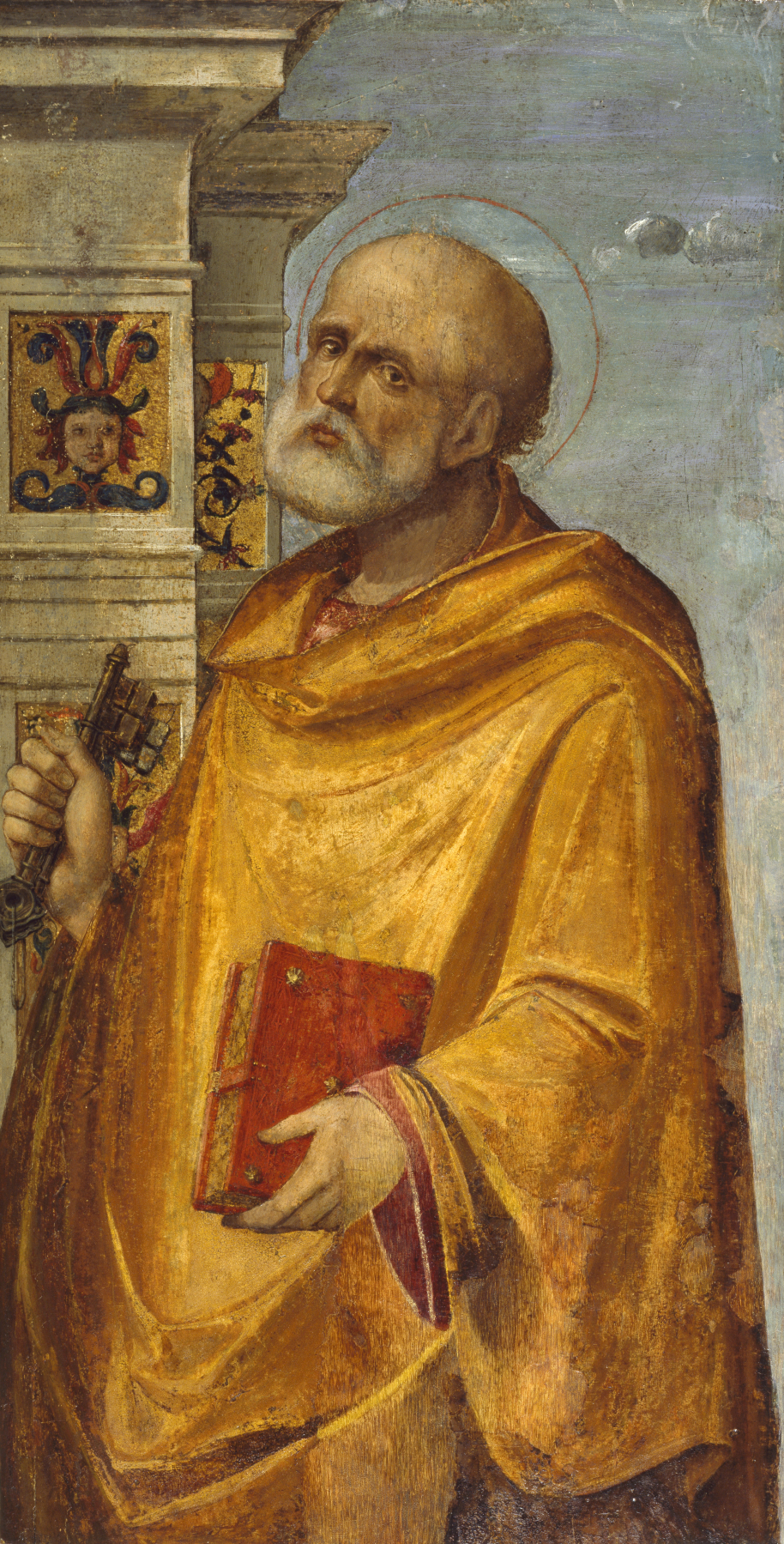Three panels with the Madonna and Child Enthroned Between the Archangel Michael and Saint Peter
(Renaissance Europe )
Though they are now framed as a triptych (three-paneled altarpiece), these panels are fragments from a large, single-paneled altarpiece that originally showed the figures in a unified space before an architectural setting. This type of arrangement is called a “sacra conversazione,” or “sacred conversation,” since placing the holy figures the same space would allow them to talk to each other.
At the center is the Madonna, who lowers her book and glances at the Christ Child, standing on her lap and playing with a rose, a symbol of love and purity. At the left is the Archangel Michael, defender of souls. He weighs two souls on a scale and holds a great spear which would have originally been shown plunging into the body of Satan crushed beneath Michael’s feet (for comparison see his depiction in Walters 37.496). At the right is Saint Peter wearing his customary yellow robe and holding the keys to the Kingdom of Heaven. The architecture behind the figures is richly carved in marble and decorated with glittering mosaics.
According to the 16th-century artist and biographer Giorgio Vasari (1511-74), Niccolò Rondinelli was one of the foremost pupils of Giovanni Bellini, the leading painter in Renaissance Venice around 1500 (see Walters 37.446). Rondinelli later established his own workshop in Ravenna, a small city on the eastern coast of northern Italy, where the Walters panels are thought to have been painted in the early years of the 16th century. An idea of how the Walters’ panels appeared before their dismemberment can be gleaned by a comparison with Rondinelli’s altarpiece of the “Madonna and Child with Saints Andrew and Lawrence” now at the National Museum in Stockholm.
Provenance
Provenance (from the French provenir, 'to come from/forth') is the chronology of the ownership, custody, or location of a historical object.
Arnoldo Corsi, Florence [date and mode of acquisition unknown]; Berenson [date and mode of acquisition unknown]; Henry Walters, Baltimore, ca. 1911 [mode of acquisition unknown]; Walters Art Museum, 1931, by bequest.
Conservation
| Date | Description | Narrative |
|---|---|---|
| 12/10/1956 | Treatment | other |
| 1/1/1957 | Examination | examined for condition |
| 1/2/1957 | Treatment | coated; examined for condition; filled; inpainted; varnish removed or reduced; x-ray |
| 10/27/1958 | Examination | examined for technical study |
| 1/1/1970 | Examination | examined for technical study |
Geographies
Italy, Ravenna (Place of Origin)
Measurements
Madonna and Child painted surface H including modern strip: 34 x W: 18 3/8 in. (86.3 x 46.7 cm); Madonna and Child surviving panel H: 34 x W: 18 x Approx. D: 1 3/16 in. (86.3 x 45.7 x 3 cm); Madonna and Child modern strip along left edge W: 3/8 in. (1 cm); St. Peter painted surface H including modern strip: 33 7/8 x W: 17 5/8 in. (86 x 44.8 cm); St. Peter surviving panel H: 33 7/8 x W: 16 13/16 x Approx. D: 1 1/16 in. (86 x 42.7 x 2.7 cm); St. Peter modern strip along left edge W: 13/16 in. (2.1 cm); St. Michael panel and painted surface H: 34 3/16 x W: 18 1/4 x Approx. D: 1 1/8 in. (86.8 x 46.3 x 2.8 cm)
Credit Line
Acquired by Henry Walters, ca. 1911
Location in Museum
Not on view
Accession Number
In libraries, galleries, museums, and archives, an accession number is a unique identifier assigned to each object in the collection.
In libraries, galleries, museums, and archives, an accession number is a unique identifier assigned to each object in the collection.
37.517









